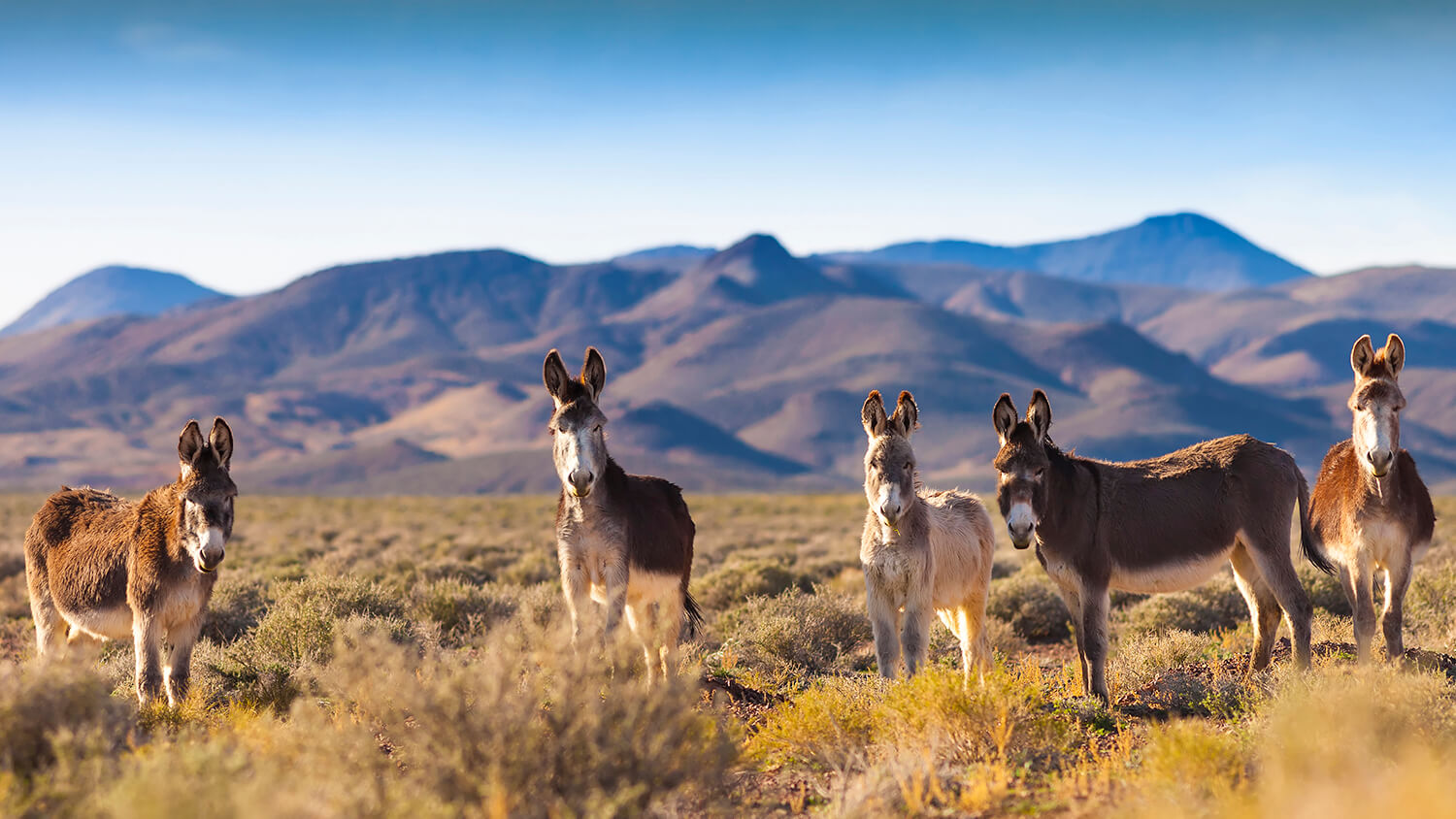
Wild Burros: Saucy Symbols of the Silver State
Although the desert bighorn sheep carries the Nevada State Animal crown upon its curvy horns, there’s another worthy critter out here that we consider a just-as-deserving Silver State symbol: the one-and-only wild burro.
Thousands of these hardy equines roam free in several spots around Nevada, including all over an entire town. Read on to learn about what makes them such stalwart survivalists, their firm place in our rich mining history, and where you can see them yourself — and maybe even meet one face to snout.
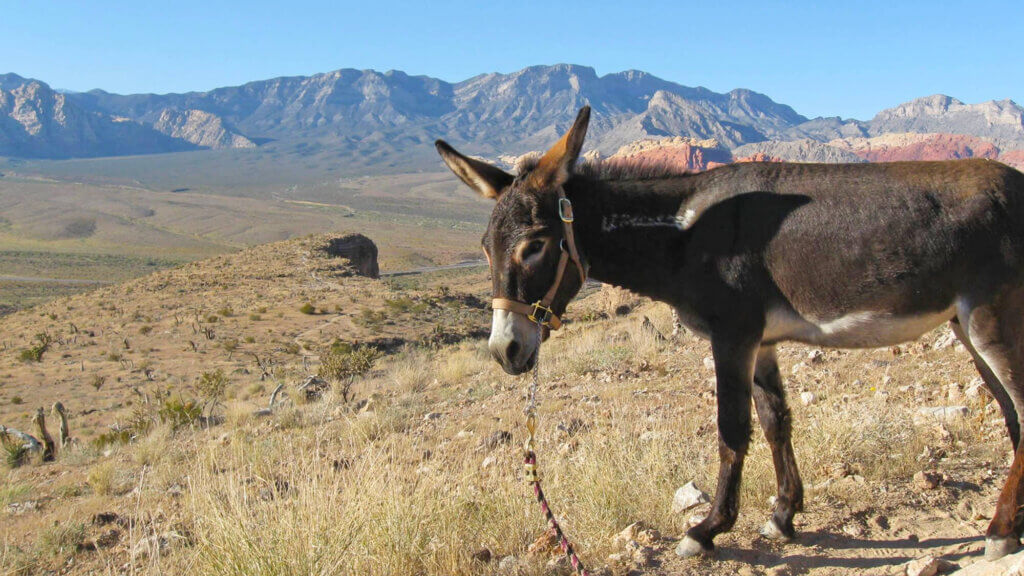
This burro is kind of a big deal. Although he’s no longer wild, Jackson the Red Rock Canyon Burro is the official mascot of Red Rock Canyon National Conservation Area. Click here to find out when you can meet him, download his activity book and other educator resources, and even follow him on social media.
What’s In A Name?
You may be wondering: what’s the difference between a burro and a donkey? The answer is: nothing, really! Burro is the Spanish word for donkey. The donkey was originally an African species that evolved to thrive in arid climates, but in the 1500s the Spanish brought the donkey to the Americas as a beast of burden. It is from these original Spanish-introduced herds that the Southwest’s thousands of now-wild burros descended, so many people keep up the tradition with the Spanish word. Oh, and as for the whole “ass” thing, the burro’s scientific name is “Equus asinus,” which we English-speakers prefer to shorten, both for brevity’s sake and to incite a few giggles.
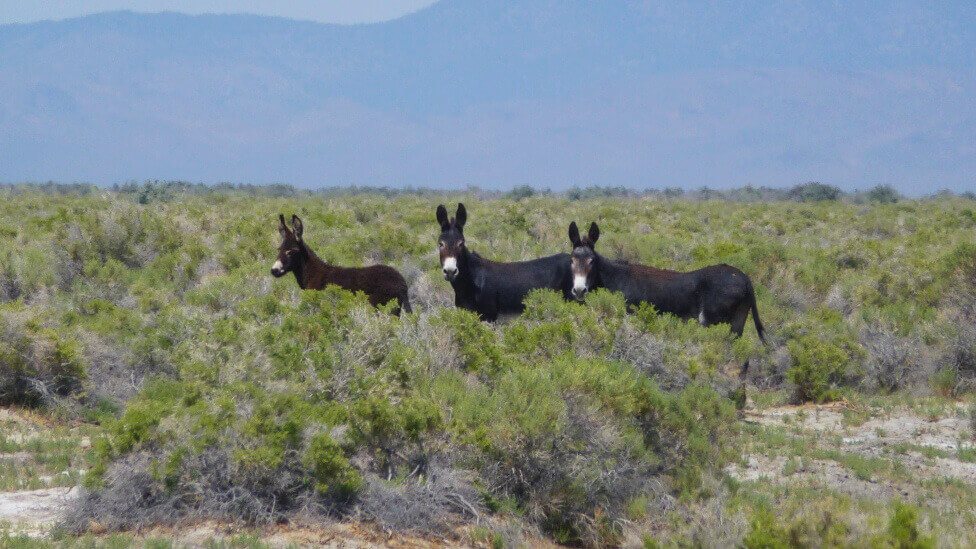
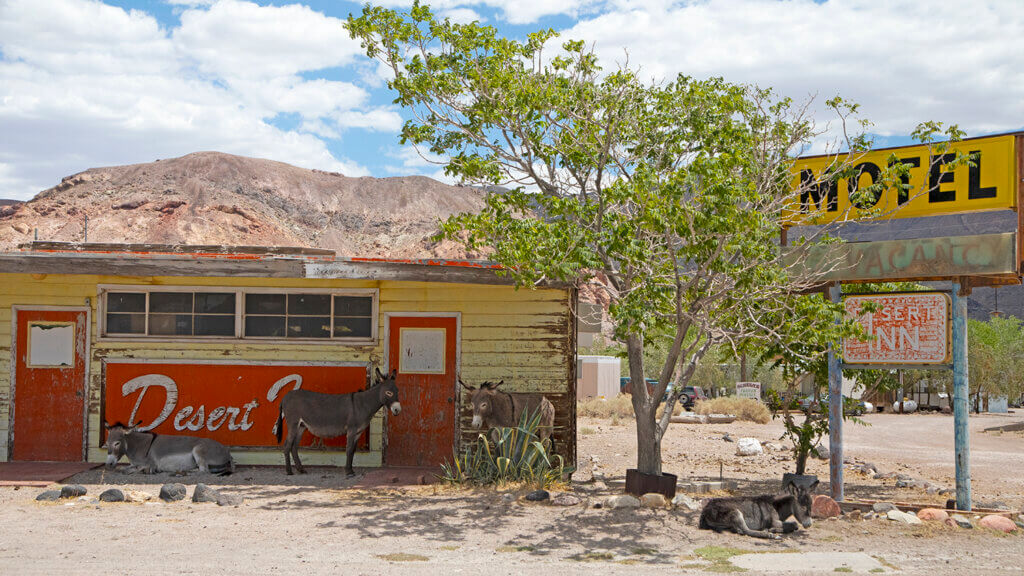
Why Are There So Many Wild Burros In Nevada?
As we mentioned, Spanish explorers and settlers employed burros as pack animals out west in the 1500s. They also used plenty of horses for overland travel, but serious jobs called for the burro. For starters, these badass beasts can carry around 150 pounds of gear each, even during stretches with little food and water, through both searingly hot and bitterly cold climates. Unsurprisingly, in the 19th century, when prospectors and miners poured into Nevada, the mighty burro was king. Over the years, especially as the mining days began to wane, many burros escaped or were simply turned loose. Give a handful of jacks and jennies a little bit of privacy and a few generations, and voila — you wind up with a whole lot more of ’em!
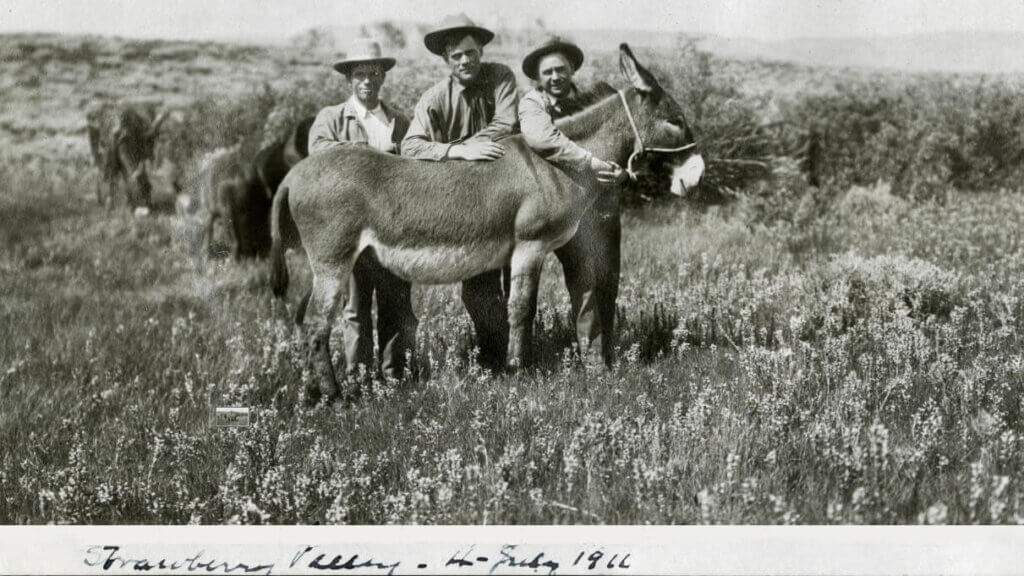
Burros: A Miner’s Best Friend
The life of a prospector was a tough one. It often meant wandering around in the remote, rugged desert from place to place, scratching around in search of something shiny. These tough explorers depended on their burros to haul gear, water, machinery, and (hopefully) ore — and even to fend off threatening critters. Once a mine was established, burros could be counted on to perform tasks like hauling ore in and out of lengthy shafts, transporting supplies to and from mining camps, and carrying weary miners between camps and towns. Burros can also do many things in the dark, and some of them spent nearly all their lives underground in pitch black mines. On top of it all, burros tend to be friendly and bond easily with people, making them trusty companions to many a lonely prospector.
The Tale of Jim Butler and His Burro
Thousands of fortune-seekers chased their sparkling dreams across Nevada with their burros by their side. However, there is one story that certainly stands out in history — that of a prospector named Jim Butler and his “inquisitive burro.”
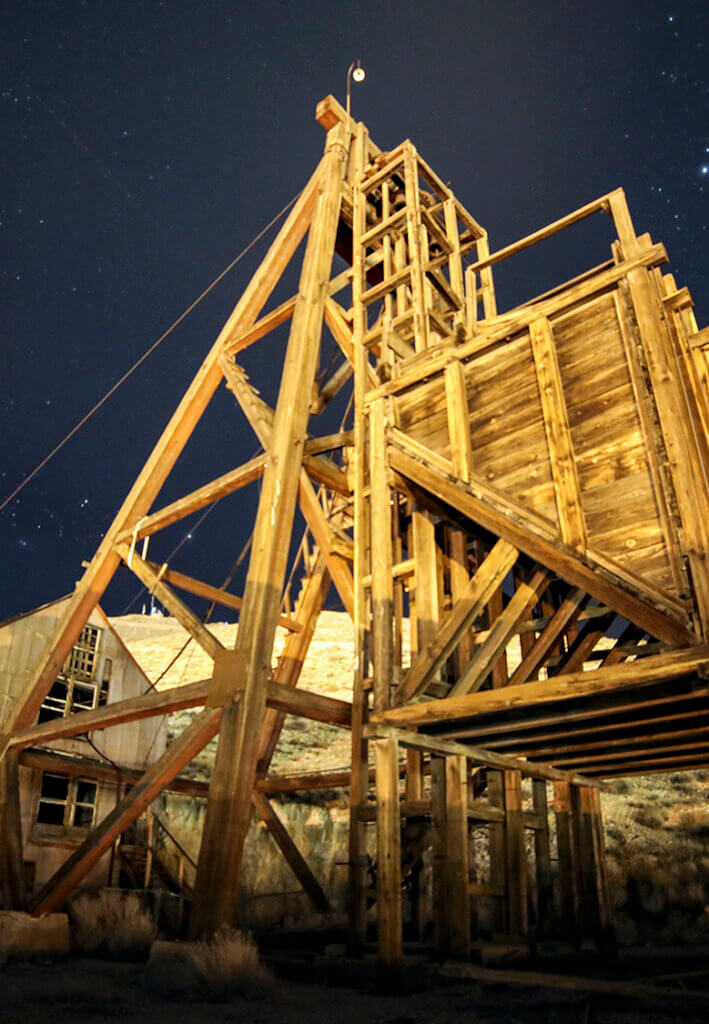
Jim Butler and his wife Belle lived on a ranch not far from modern-day Tonopah in what is now the ghost town of Belmont. Jim was a businessman in the then-booming community, but was also described as a “sometimes prospector” — which basically meant it wasn’t uncommon for him to suddenly get a wild hair and hit the trail with his burro in search of the next big claim. In May of 1900 he did exactly that, setting off from his ranch in search of a promising vein and making his way to an undeveloped area called “Tonopah” meaning “greasewood” and “water” in the Shoshone language, which Jim spoke fluently. Suddenly a massive storm rolled in and Jim set up camp for the night near a spring in the foothills.
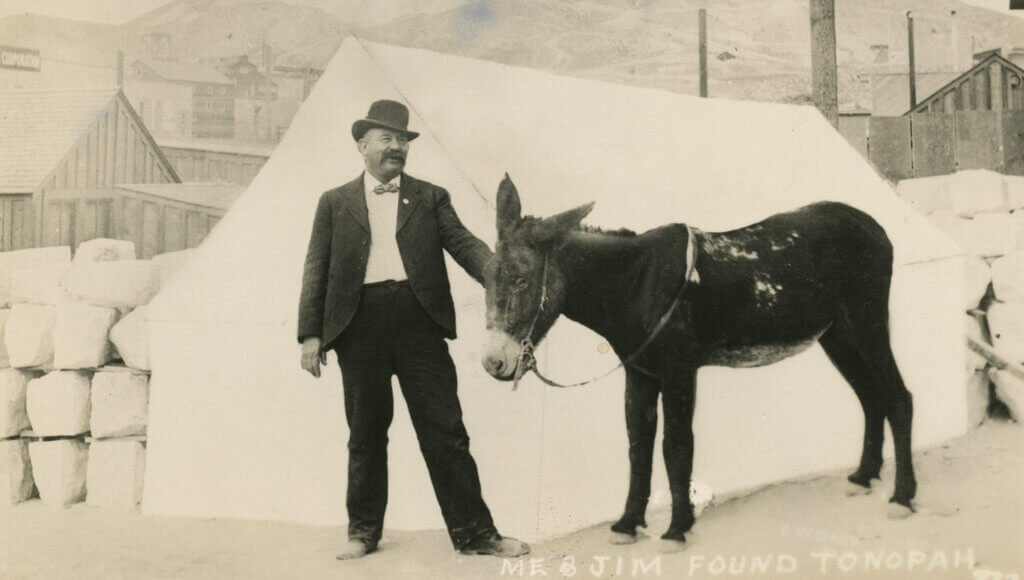
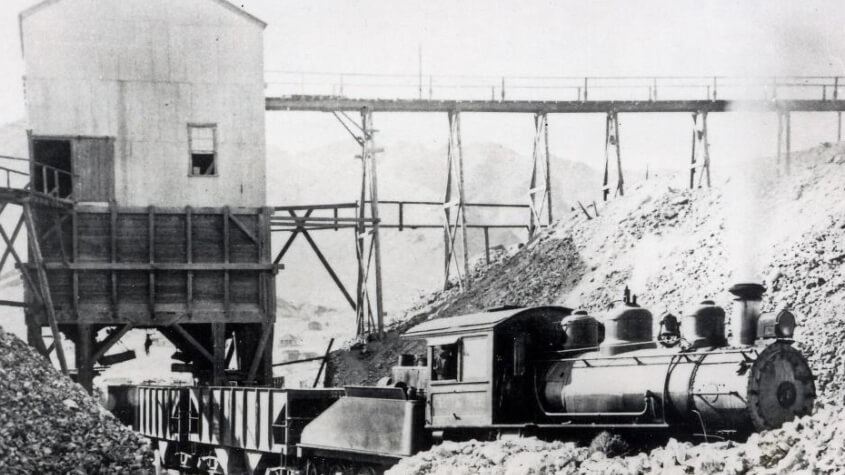
As the story goes, Jim awoke up the following morning to find that his burro had wandered off. When he finally tracked his ass down (see what we did there?), he wasn’t super interested in getting back on the trail. So, to get him moving, Jim picked up a rock to toss at them for some rude encouragement. Before letting it fly, Jim noticed this rock was unusually heavy. Turns out, that’s because the thing was mostly pure silver, prompting Jim to immediately stake his claim, which he named “the Mizpah” — the first of many seriously fruitful claims that would eventually make Tonopah one of the most profitable boomtowns in Nevada history.
Stubborn as a… Burro? Myth: Busted!
We’ve all heard the term — “Stubborn as a mule.” (For the record, a mule is the hybrid offspring of a burro/donkey and a horse.) But the qualities being described as stubbornness are in fact just burros being too damn smart to put up with your BS. Unlike horses, burros will stand their ground to avoid an undesirable situation. For instance, you can make a horse walk through a dangerously fast-flowing stream or down a precarious slope — not burros. These guys will drop anchor and essentially say, “Have fun bein’ dumb, pal. But me? I ain’t movin’.“
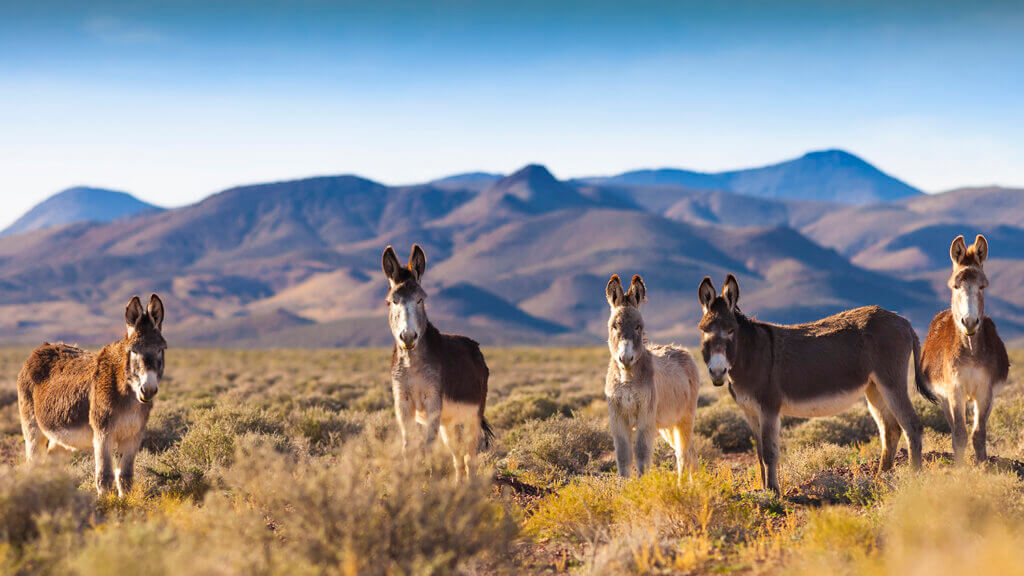
Burros can also defend themselves with lethal force, with a hefty blow delivered from their front or hind legs. Their combo of high intelligence, keen situational awareness, and powerful self-defense has made the burro a perfect companion animal not just to humans but also to dogs and other animals on farms and ranches, relied upon to scare off would-be predators and to alert other animals of other potential dangers.
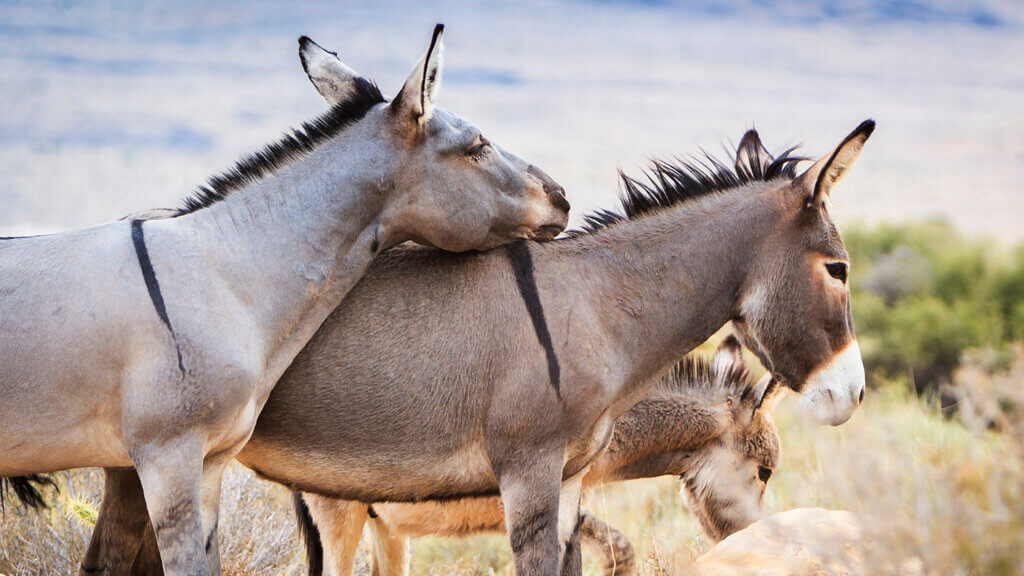
When you’re out cruising the Nevada backcountry and you see a pair of distinctive ears pop up on the horizon, you might think what you’re seeing is a wild horse. However, a burro’s ears are almost twice the size of a horses and stand up straight, almost like a gigantic rabbit’s ear. Burros are also only about half the size of a wild horse (although they’re often about twice as loud). Like horses, burros can vary in coat color from so dark brown they seem nearly black to so light they almost seem white. Regardless of coat or color, all wild burros rock a dorsal stripe — markings that look like a cross on their shoulders and back, as well as dark earmarks, lighter coloring around their muzzle and eye rings, and a white or lighter colored belly and inner legs. Like wild horses, burros form bands (or herds) that are generally led by a dominant male (jack) and a lead mare (jenny).
Where to See Wild Burros in Nevada
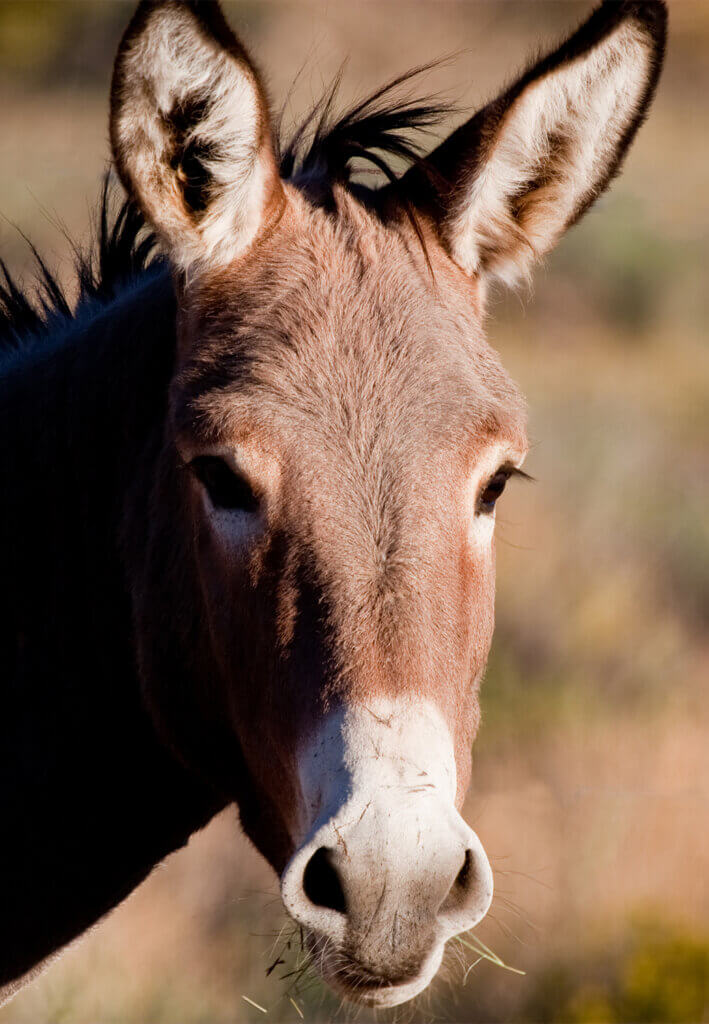
Burros thrive in all kinds of Nevada locales, from sunny southern Nevada all the way up to the Black Rock Desert. Some herds have never strayed far from their original “hometowns” — now historic ghost towns (or “living ghost towns”), like Goldfield, Rhyolite, and Marietta. They also tend to set up shop near natural cold springs and hot springs, like Spencer Hot Springs and Soldier Meadows Hot Springs, which they treat as a big ol’ burro drinking fountain.
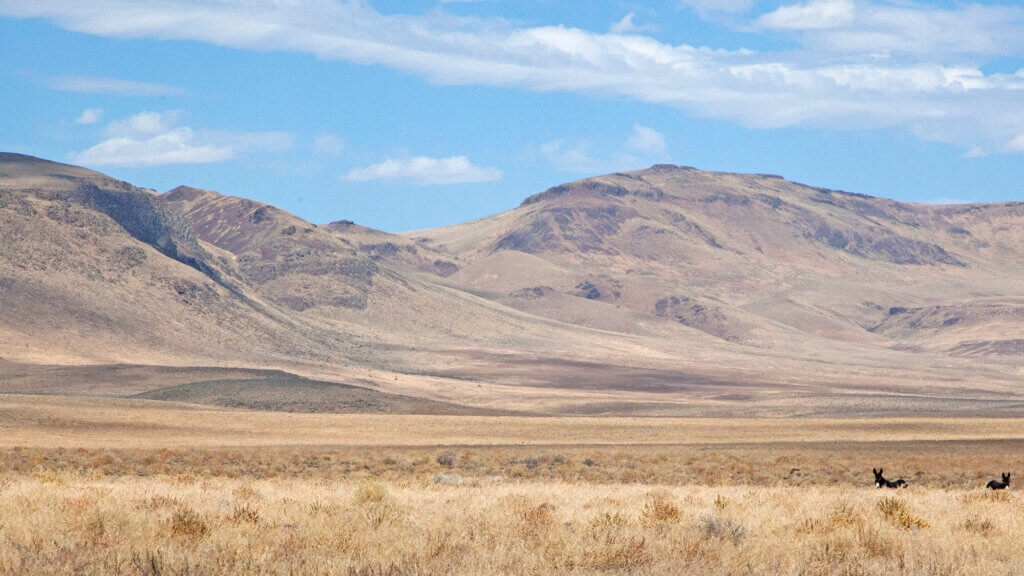
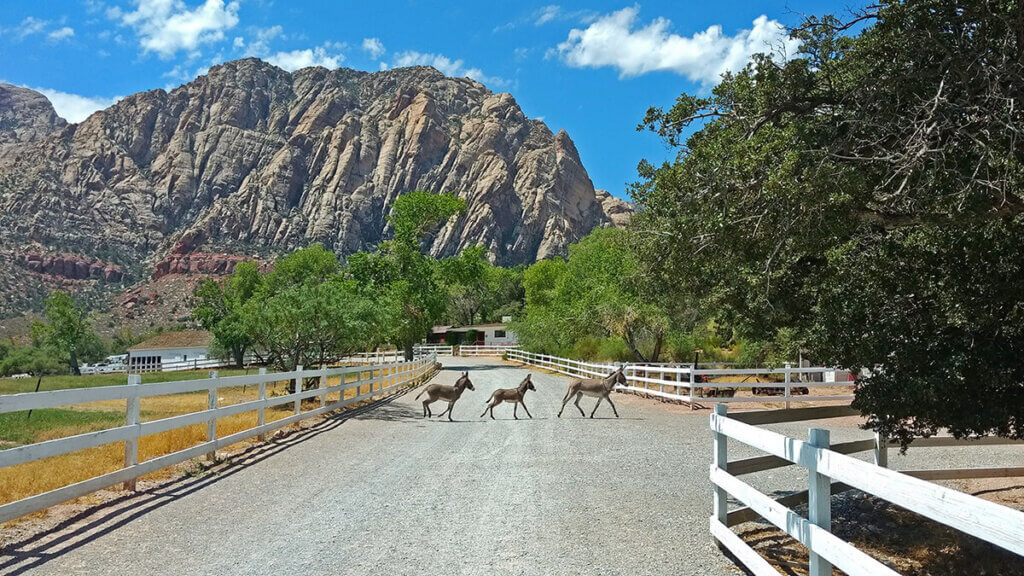
But you don’t need to venture too far out of civilization to spot wild burros. In fact, just 20 minutes from the Las Vegas Strip, you can almost always see them bounding around Red Rock Canyon National Conservation Area — especially at Spring Mountain Ranch State Park, where they love to cool off with sips from cold springs and munch on the park’s sprawling lawn.
The Burros of Beatty and Bullfrog
Located just outside the boundary of Death Valley National Park is the town of Beatty and the famous ghost town of Rhyolite (one of the most photographed ghost towns in the West.) Both are located in the heart of what was called the Bullfrog Mining District. Just like at Spring Mountain Ranch State Park, when exploring these these two spots, it’s almost impossible not to spot a wild burro or two… or twenty. You know you’re close to Beatty when you see an entire band of ’em strollin’ down the side of the highway, and you know you’re definitely there when they waltz right up to you at the Eddie World gas pump or to your hotel room window. Learn more about Beatty’s famous, fuzzy, friendly welcoming committee right here.
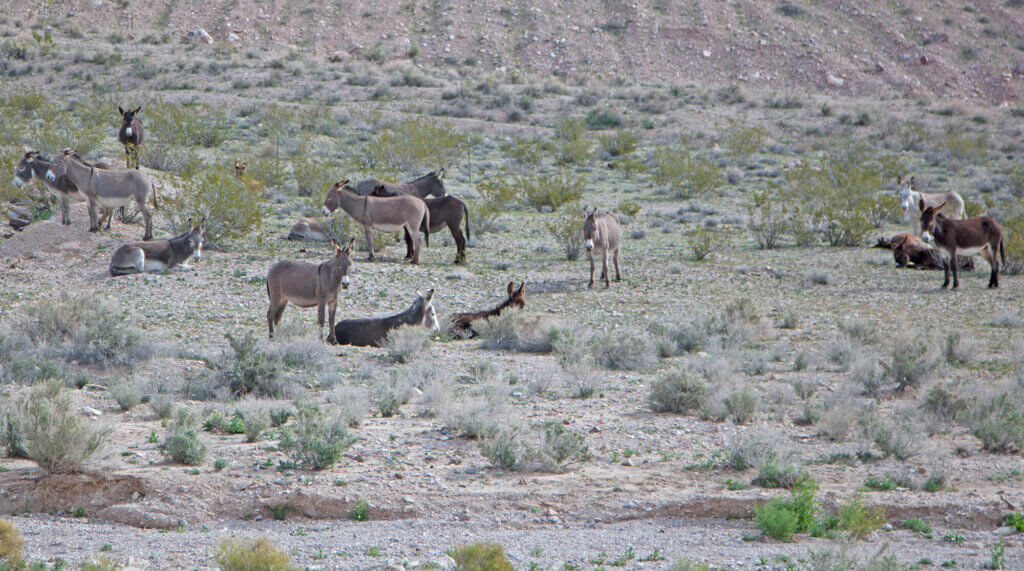
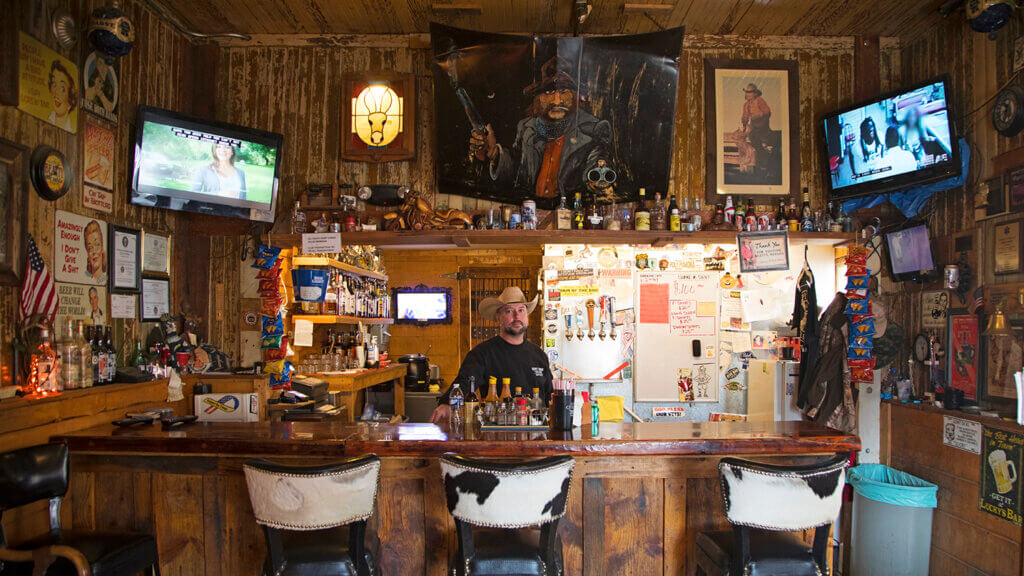
Travel Nevada Pro Tip
The Hickison Burros of Big Smoky Valley
If you’re road-tripping along the Loneliest Road in America, be sure to make the detour south into Big Smoky Valley. Flanked by the towering Toiyabe and Toquima mountain ranges, the valley is home to 10,000 year-old petroglyphs, the best known example of pictographs in North America, and gloriously relaxing Spencer Hot Springs.
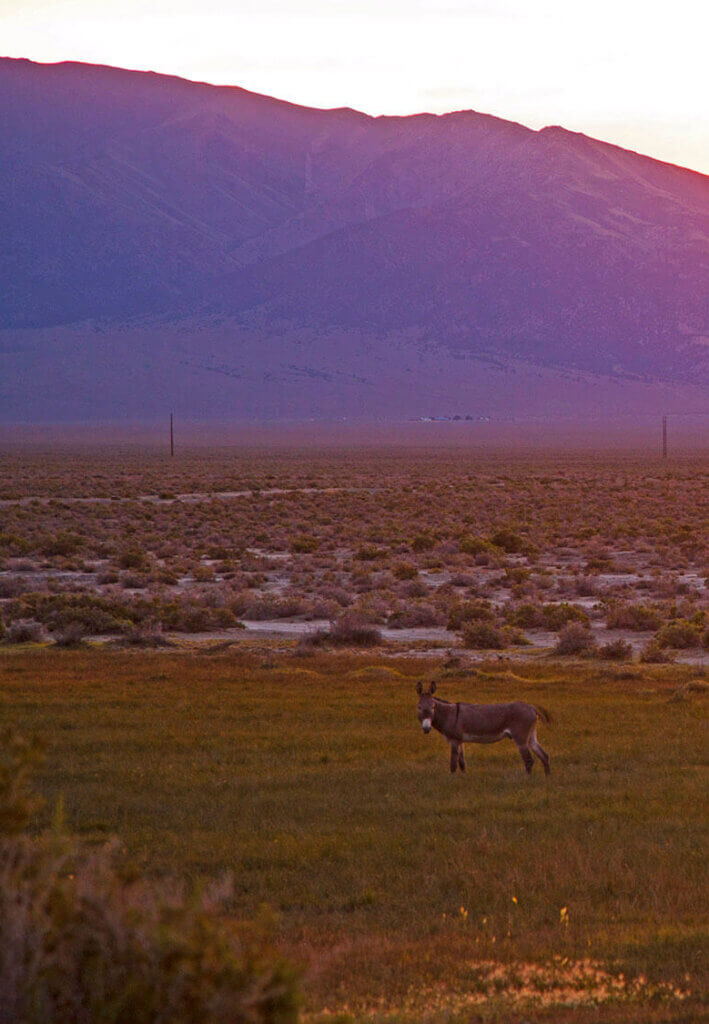
While enjoying a sunset soak or camping in the area, you’re likely to spot (or at least hear the telltale HEE-haaawws of) the Hickison Burro Herd. This group of fuzzy-faced friends has roamed this region for ages. In fact, they’re so well known that they have their own official herd name and are marked in the Benchmark atlas.
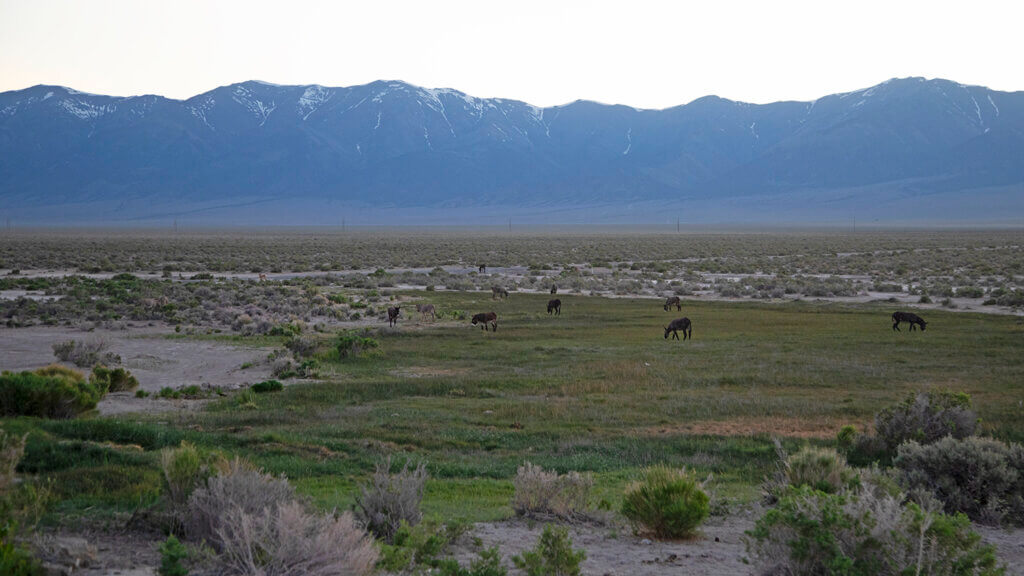
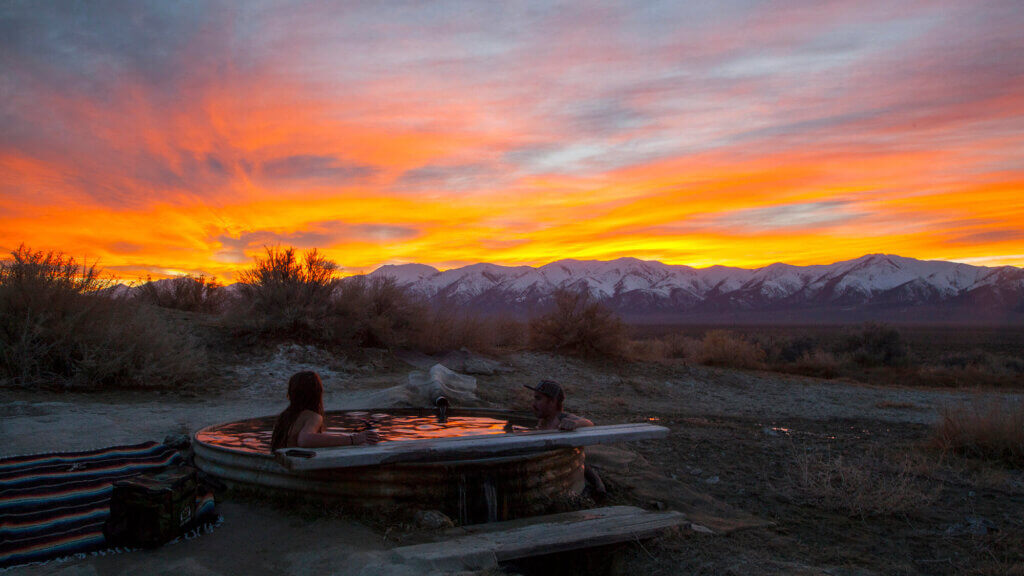
Spencer Hot Springs has four soaking pools (although the uppermost one is generally not hot). The “cowboy tub” (read: repurposed cattle trough) closest to the road flows into terraced ponds, which creates a marshy, grassy area that the burros love. It’s never cool (or legal!) to approach, or especially wildlife, no matter the circumstance, but don’t be alarmed if they come right up to the tub itself for a drink.
Travel Nevada Pro Tip
Get Inspired
Related Stories
